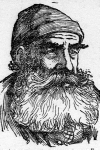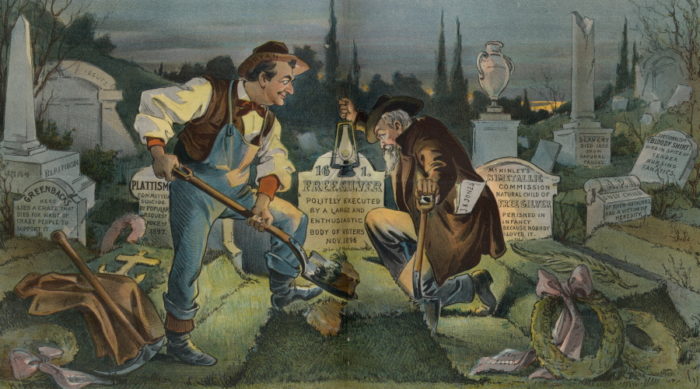
Last week, I introduced Robert W. Smiley’s book on the nightlife of 1894 Washington D.C. While the examples I quoted are far from the kind of dirt I am sure those who purchased the guide back then were looking for, as the work progresses, it does live up to its name.
On page 39, Smiley turns to “slumming,” which is exactly what it sounds like – a tour through the slums of the city. Smiley recommends going in groups of at least five, and, if possible, hiring a retired or off-duty detective to act as security and/or guide. Obviously for those slumming at the time, the worse the slum, the better, so he begins his section on “Other Slums” with the inviting lines:
As bad as Louse alley is Willow Tree alley, and Pleasant alley, and Fighting alley, and Canal street, and Vinegar row. All these are in one neighborhood and make up what is known in police circles as “Bloodfield.” If you go slumming in this part of the town you should take a detective along. The best plan, however, is to keep away. They are not partial to sightseers and their disapproval is likely to assume emphatic forms.
Similarly, the section on Swampoodle (listed here as Swamp Poodle) ends with the admonition to “keep away, however, unless you are willing to risk life and limbs.” These two sections of town are the only ones even close to Capitol Hill, for the real depravity, you had to go further afield – and Smiley is happy to explain how to find the opium dens, “Resorts for Cheap Songs,” and disorderly houses of Washington.
For those for whom this is not enough, Smiley has one last option, one that brings you back to the further reaches of Reservation 13 on the Hill. The section is entitled “The Ghouls” and is reprinted here in full:
We have three medical colleges in Washington which must be supplied with human bodies for dissection. During the fall and winter months, the night prowler might visit the small and unprotected cemeteries and the Potter’s field, where he will perhaps see the ghoul’s wagon and the men themselves at their work. But he must “beware the dog,” for these people are upon an unlawful errand and will do most anything to prevent intrusion or interruption. You can see the wagon drive to the rear of the medical college about 2 or 3 o’clock A. M. If you have $20 to spare, you may be able to buy the privilege of accompanying them on their next trip, but you must overcome their suspiciousness which is hard to do.

How many people actually took up Smiley’s suggestion is unknown. However, the following year, a reporter for the Washington Times visited the abode of the noted resurrectionist Percy Brown [pictured] who, as the article cheerily notes, “has hoisted so many dead people from their clayey resting places.”
It is at this point that the reader probably feels that they should have stuck with Smiley’s recommendations for prohibitionists, who were advised that the usual venues they were likely to seek out came with a side order of admonishing moralism. It seems a distinct improvement over watching grave robbers going about their business.
